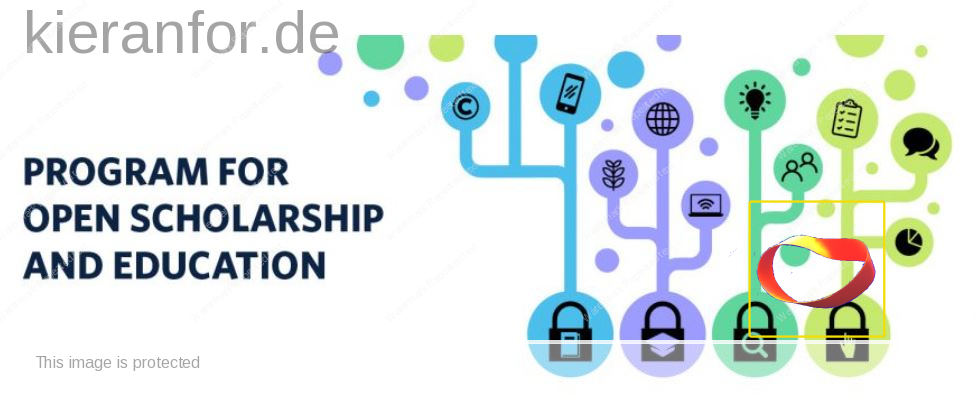Header image: Screenshot from UBC POSE Page
INTRO
- presented by the UBC Open Working Group, the Centre for Teaching, Learning and Technology and UBC Library.
- lower barriers to knowledge by making the processes and products of scholarship more distributed, transparent, and accessible.
- Open scholarship is an umbrella term which encompasses open access, open research, open science, open data, open education, open pedagogy and all other forms of openness in the scholarly and research environment.
Open Access: open Access is a public good [see “The Commons“], based on the belief that the public, who largely funds education and research, should have broad and unfettered access to the knowledge being produced by the academy. (Budapest 2002)
- developing strategies to make it the default method of academic knowledge dissemination
Open Research: “movement which aims to make scientific research, data and dissemination accessible to all levels of an inquiring society” (LERU, 2018).
- promoting transparency and in turn supporting reproducibility and credibility.
- also seeks to make research outputs comprehensible to a broader public providing the opportunity for scientific research to have applications in non-academic environments
Open Education: Universal Declaration of Human Rights —2007 Cape Town Open Education Declaration
- “to making education more accessible, especially where money for learning materials is scarce. They also nourish the kind of participatory culture of learning, creating, sharing and cooperation that rapidly changing knowledge societies need.”
- making the process and products of education more transparent, understandable and available to all people

We should be trying to dismantle the barriers (largely imaginary, in any case) that separate academia from the rest of the world.
Jon Beasley-Murray, Associate Professor, UBC Latin American Studies
Creating OER resources and collaborating with others allows for a diversity of voices and perspectives to be presented.
Surita Jhangiani, Assistant Professor of Teaching, UBC Faculty of Education
Open pedagogy fulfills one of the core commitments to a democratic system by cultivating an informed, educated, and engaged electorate
Arthur Gill Green, Affiliate Assistant Professor, UBC Geography
Open Access Discussion
I am new to this area but some initial thoughts on the questions include:
Do you think OA potentially inhibits ownership of intellectual property (IP)? How does the framing of the “greater good” impact the conversation around OA and IP?
Like a good PhD student, I will answer this question with another: what does “ownership” mean as it relates to ideas or knowledge created in publicly funded educational spaces? If I were some regular guy writing a book over many years in a shed at the end of my garden, I would consider myself the “owner” of that product: I made it, from nothing, with no public funding; it’s mine.
Now, if I were an academic who writes a book, perhaps a textbook, over many years during which I was employed by a publicly funded university, I might feel differently about my “ownership” of that product. Yes, I may not have been paid directly to write this book, but I couldn’t have done so without first having had access to the academy through which I was able to gain even greater access and understanding of my fields of interest. This valuable access, gained through publicly funded education, gave me a momentum that has afforded me the financial and intellectual resources needed for me to write my book. Yes, I made it, but as part of and within a network that supported me while I did so, a publicly funded network through which I have gained great privilege and to which I owe a debt. While I wrote the book, it is not mine; it is ours. In the interest of fairness, it seems like I should not pull the ladder up after me and charge a fee to lower it so that others can follow me; if others had done so, my colleagues and mentors, my journey would have been a lot harder.
To me, it seems to be mostly an issue of fairness and the degree to which we will accept/support the privatization of a public good. Barriers to intellectual property created within the academy should be as low as possible.
Open Access Module
Academic Publishing Today
KF LOL ~ unpublishing
- research is largely supported through public funds, yet the vast majority of funded research is published in paywalled journals that only those affiliated with academic institutions have access to.
KF: freedom of expression
- Why hasn’t open sharing become the norm for all scientific publishing?
- As of 2015, the academic publishing ecosystem is a 25 billion dollar a year industry.
- Pricing: the peculiarity of the economics of scholarly publishing whereby the main consumers of academic research (academics and students) are largely shielded from the cost.
The Role of the Academic Library
- Transitioning away from the big deal: it is no longer possible, nor necessary, to keep up with the every increasing level of scholarly output. University of California, which cancelled its subscription with Elsevier (2020)
- DORA – the San Francisco Declaration on Research Assessment – is a scholar-led initiative that is asking institutions and funders to “not use journal-based metrics, such as Journal Impact Factors, as a surrogate measure of the quality of individual research articles, to assess an individual scientist’s contributions, or in hiring, promotion, or funding decisions.”
- The Cost of Knowledge project started as a post on mathematician Timothy Gower’s blog urging his colleagues to consider a boycott of Elsevier (now at 17,000+ academics)
Key Takeaways
- The current publication ecosystem and academic promotion processes prioritize metrics and rankings of publications, such as Journal Impact Factors and H-Index, as a measure of the quality of value which has negative impacts on academic work.
- The advent of the internet and open access was seen as a potential game-changer to wrestle control of academic publications back from publishers and into the hands of the academy; however, this has not occurred as publishers find ways to monetize open access options.
- Consolidation of publishers has negatively impacted the costs of academic outputs but, of greater potential harm is the impact private industry has on what is and is not published (i.e. greater focus on positive results and novel studies).
- Publishers have expanded to offer research analytic tools as a means of monetizing research performance and benchmarks causing further questions around how value and quality are conflated with quantitative measurement.
- Intellectual Property
- Copyright and Publisher Agreements
- Research Scooping
- Traditional Knowledge T
- K Licenses / Labels
Open Access Models
- Green OA relies on the research first being published in a traditional subscription-based journal: author must first select a journal that permits self-archiving as outlined in their publisher agreement; publishers often request that authors respect an embargo period;
- Many authors are deterred from gold open access publishing because prestigious open access journals charge article processing charges (APCs): The introduction of APCs has altered the relationship between publishers and authors because for the first time authors are directly involved in the economic calculus of publishing.
- “Accommodate negative results”
- Problem has moved from access to control “Former inequalities remain. New inequalities are emerging.”
- Cons: Daniel Justice video – not all knowledge should be widely disseminated (decolonizing OE [POWER]; appropriation; )
Activity bank:
Open Research Module
- Open Workflow: increasing the openness of research workflows – the processes and methodologies used to conduct the research
- buffers against future loss of scholarship due to a lack of ownership, digital decay, software deprecation, and missing files
- Small decisions such as a consistent file-naming convention or making open backups of data stored in a proprietary tool can make it possible to continue work even a few years or decades down the line.
- Openness for workflows generally comes down to how information is stored and used in every step of your work
- Using a central online tool such as OSF for your project can help make this process of exposing your steps easier.
- Reproducibility [Robust] for research means the workflow and data used in the research project can be used to yield the same results: able to use the same experimental method, data, population, and general conditions of the first experiment; leads to increased rigour
- Replicability [Generalizeable] of research means that the same workflow is used by different people for a research project using a new dataset yielding different but expected results: proves the transferability of the workflow
- Working in a Reproducible & Replicable Manner
- Version Control
- Including appropriate meta information
- File organization and sharing
- Importance of File Names
- Human readable
- Machine-readable
- Sortable: ISO standard YYYMMDD
- Usa A/B/C for revisions: _RevA_KFedits.docx
- Final moves to _Rev0.pdf
- Camel case (sometimes stylized as camelCase or CamelCase; also known as camel caps or more formally as medial capitals) is the practice of writing phrases without spaces or punctuation, indicating the separation of words with a single capitalized letter, and the first word starting with either case.
- Choosing formats that are operating system and tool-agnostic
- OSF, formerly known as the Open Science Framework, is a workflow management web application
- Reproducible Zipping with ReproZip
Open Software (13 min video)
- Differentiating free software and Open Source [publicly accessible] software from Free Software is often done, per the GNU philosophy, by suggesting that we’re not talking about free in the sense of “free beer”, but “free speech”.
- Copyleft is the practice of granting the right to freely distribute and modify intellectual property with the requirement that the same rights be preserved in derivative works created from that property.
Readable Code (3:59)
- Open Code Cars have MPH (Miles per Hour) that measures the speed that they travel. The better the car the faster the MPH or speed. Developers have WTFPM (WTF per Minute) that measures the number of ‘Works That Frustrate’ that the developer can read per minute, aka code quality.
- Literate Programming “[i]nstead of imagining that our main task is to instruct a computer what to do, let us concentrate rather on explaining to human beings what we want a computer to do… [achieved] … by considering programs to be works of literature.” (Donald Knuth)
- R has taken academia by storm. R is open source and community developed.
- WYSIWYGs give you a graphical interface (GUI) where your content and your structure cannot be separated – they provide us with a document with pagination and the ability to change fonts, bolding, colours etc on the fly with the click of a button. Markup, or markdown, employs a three step process. In a plain text editor, you write, distraction free from the ability to change your formatting. When you’re done, you call on another program to transform your text into a Word document, pdf, PowerPoint etc. To view the formatted document, you open it with a third program – your web browser, pdf reader, or word processor.
- Open Data FAIR principles for sharing data: findable, accessible, interoperable and reusable – privacy, ethical, or cultural issues to consider.
- Tri-Agency Statement of Principles on Digital Data Management stipulates that, “research data collected with the use of public funds belong, to the fullest extent possible, in the public domain and available for reuse by others.”
- There are three types of metadata: Descriptive, Administrative, Structural:
- Open government data can be a great way to start exploring some of the dos and don’ts of open data sharing, while leveraging data that might enhance your own research.

